There are many examples of viviparous animals across different species. Mammals such as humans, cats, dogs, horses, whales, and kangaroos are all considered viviparous since the embryo develops inside the mother’s body. It derives nourishment from a placenta rather than an egg shell. The offspring continues to grow this way internally until live birth.
Other examples include amphibians like certain salamanders and caecilians which also demonstrate viviparity. Even some reptiles, fish, and invertebrates have viviparous species. This reproductive process has clearly developed independently across a variety of taxonomic groups.
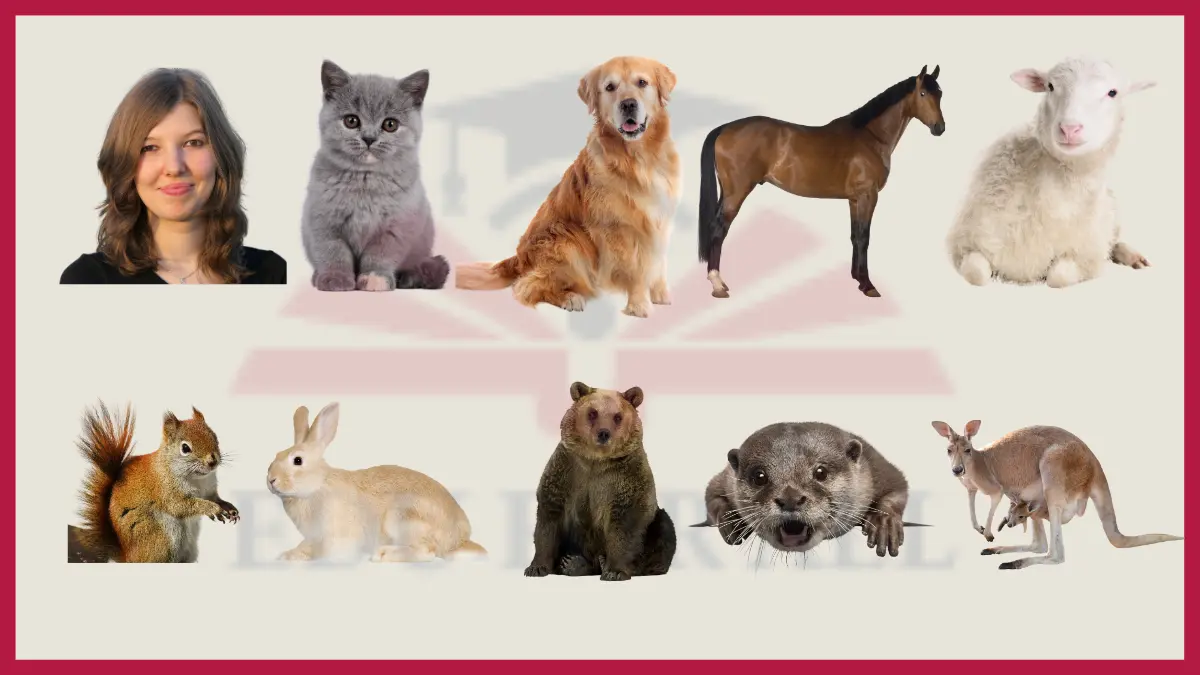
Examples of Viviparous Animals
Here are 20 examples of viviparous animals:
1: Human
Scientific name: Homo sapiens
Humans are considered viviparous because the embryo develops inside the mother’s womb where it derives nourishment from the placenta. The fetus continues to develop until birth without an egg shell.
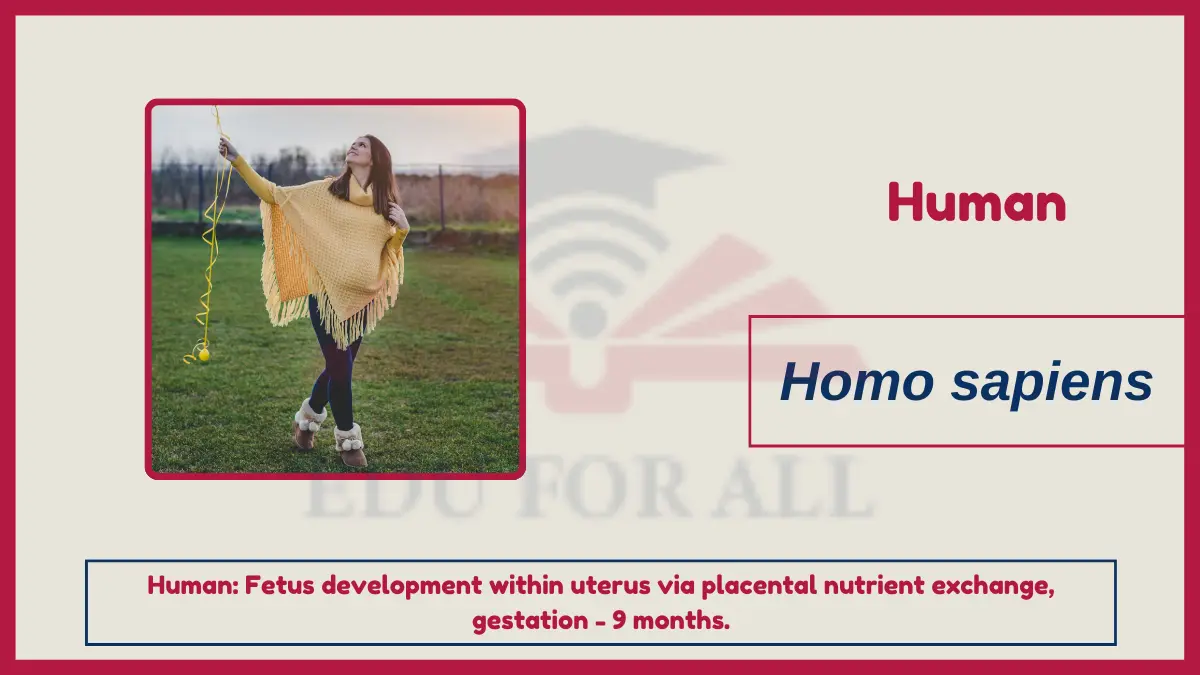
Do You Know?
Human pregnancies last approximately 9 months.
2: Cat
Scientific name: Felis catus
Cats are viviparous mammals that develop embryos inside the mother’s uterus. The embryos attach themselves to the wall of the uterus and get nutrients directly from the mother’s bloodstream via a placenta rather than encased inside an egg shell. They continue developing this way until birth.
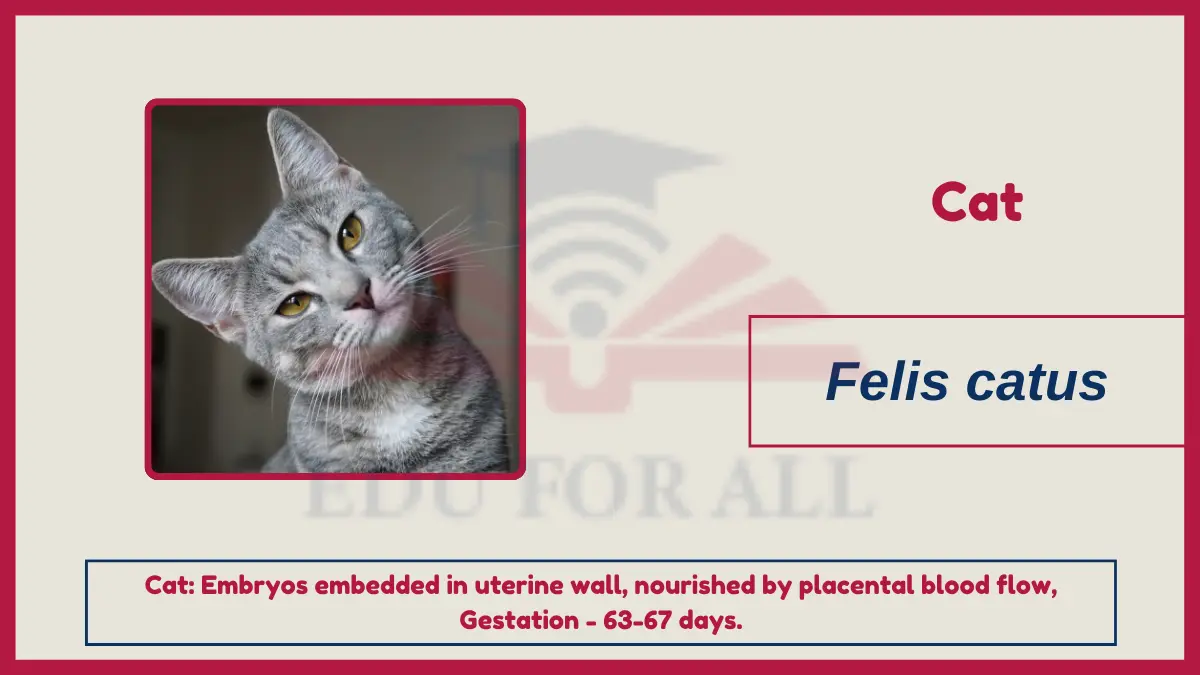
Do You Know?
The average feline pregnancy lasts between 63-67 days.
3: Cow
Scientific name: Bos taurus
Cows carry their young inside them as the embryos develop within specialized membranes attached to the uterus wall , deriving nutrients from the mother’s body through the placenta. This is the definition of viviparous reproduction seen in cattle.
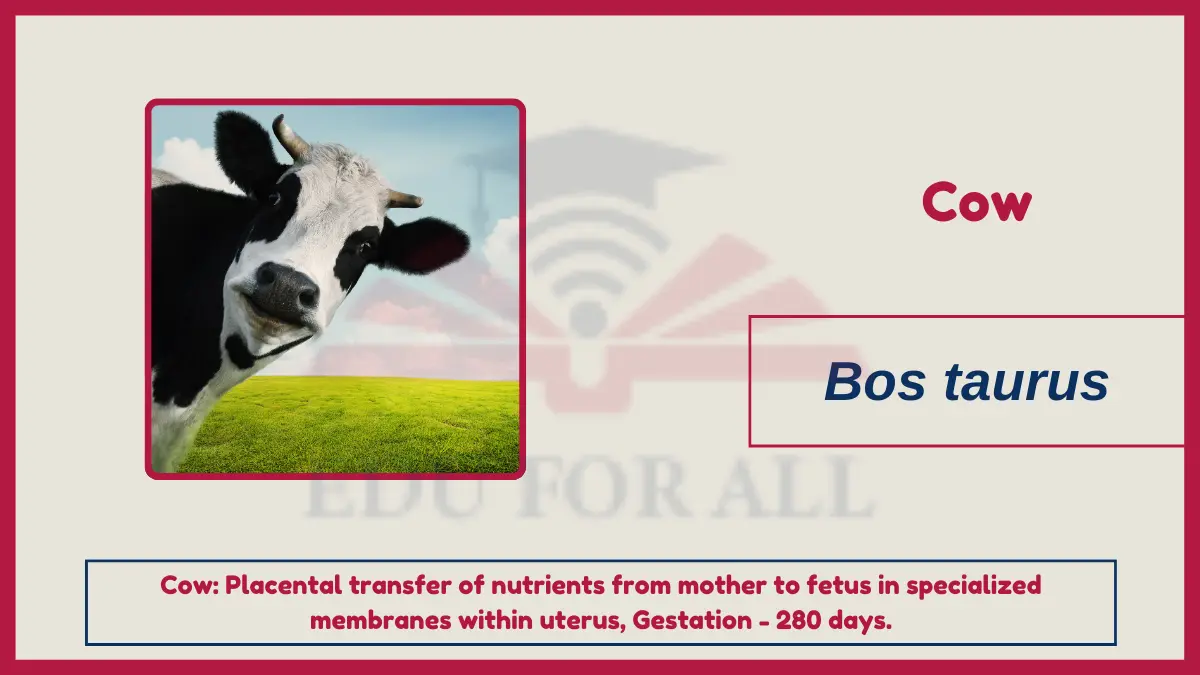
Do You Know?
The gestation period of a cow averages 280 days.
4: Dog
Scientific name: Canis lupus familiaris
Dogs nurture their unborn young within the mother through a placental attachment, providing sustenance and protection while the offspring grow. As viviparous mammals, the puppies continue maturing internally until the delivery process begins.
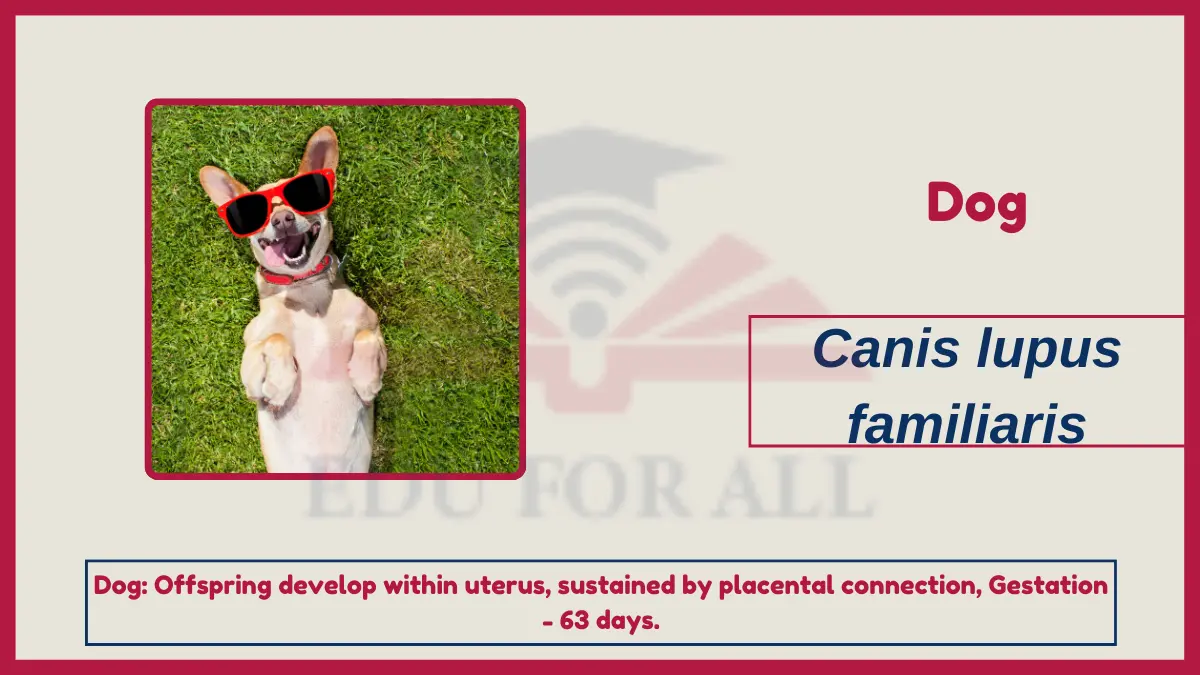
Do You Know?
On average, a female dog is pregnant for about 63 days.
5: Horse
Scientific name: Equus ferus caballus
Horses nourish their fetuses inside the mother’s uterus via an organ called the placenta. The embryos receive sustenance this way, without an egg casing, which classifies horses as viviparous mammals. The young continue growing internally leading up to parturition.
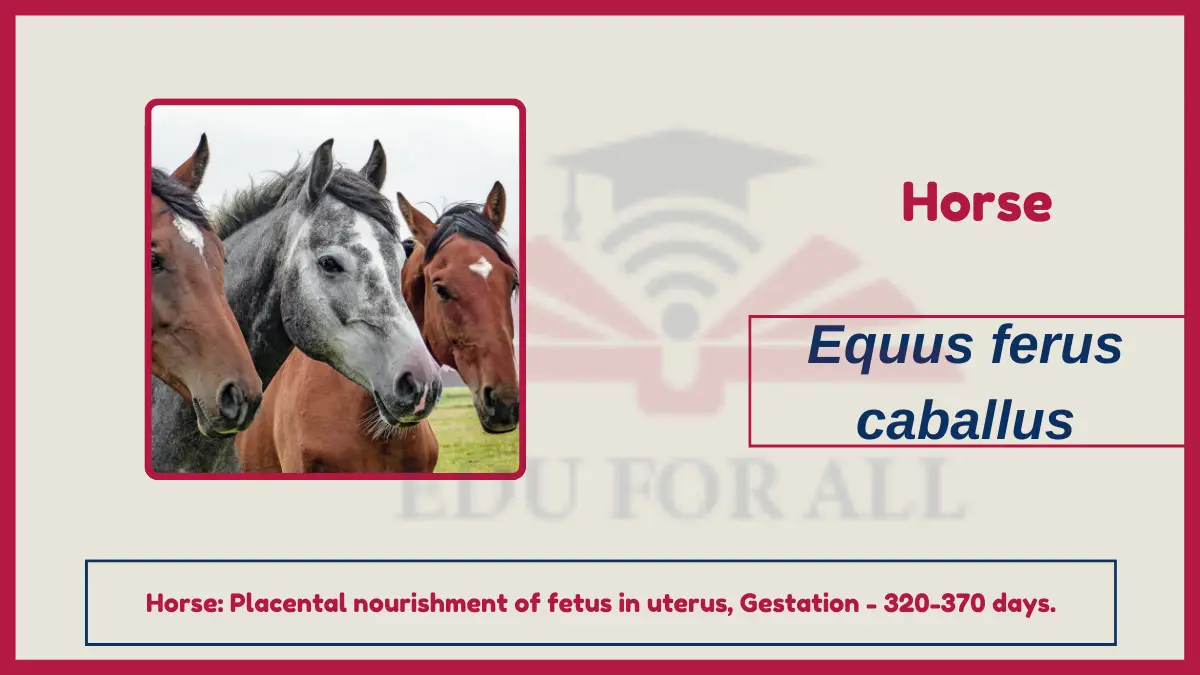
Do You Know?
The average horse pregnancy lasts 320 – 370 days.
6: Sheep
Scientific name: Ovis aries
Sheep are considered viviparous because the sow provides for her unborn, internally developing offspring through a placental attachment inside her uterus, rather than laying eggs. The lambs gestate this way until birth.
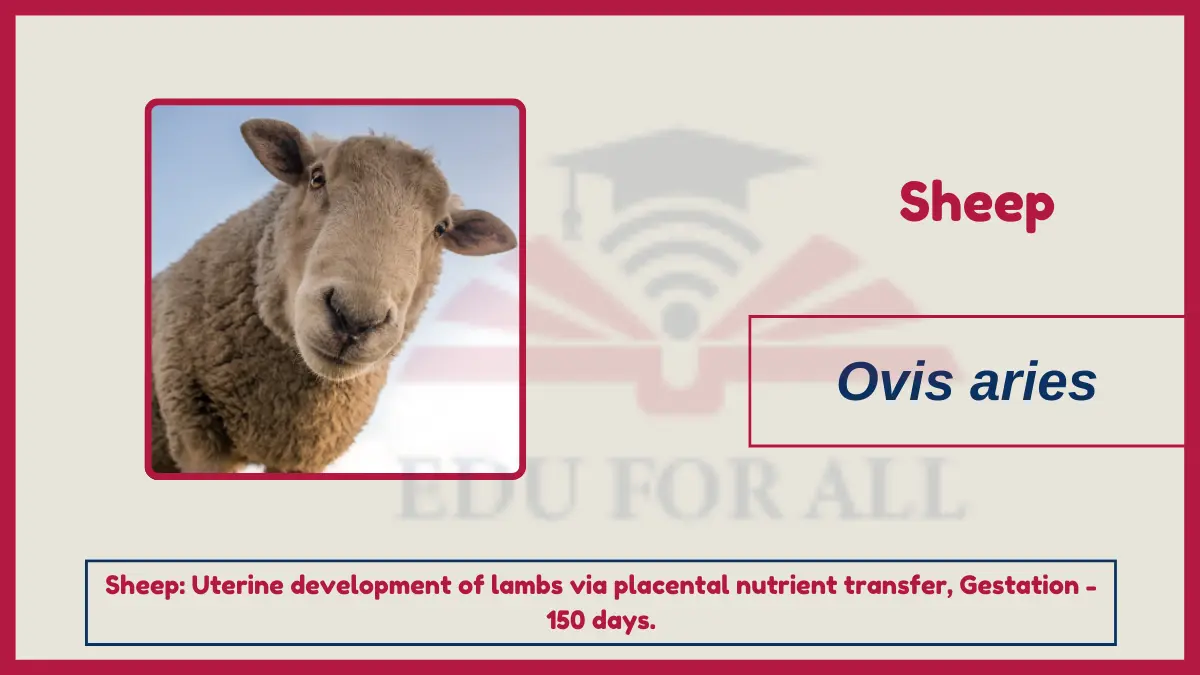
Do You Know?
Gestation length in sheep averages 150 days.
7: Deer
Scientific name: Cervidae
Deer reproduce viviparously, with embryos implanting into the uterine wall to derive nourishment from the mother’s body through a placenta. As the offspring grow, they remain within the closed environment of the womb until the birthing process transpires.
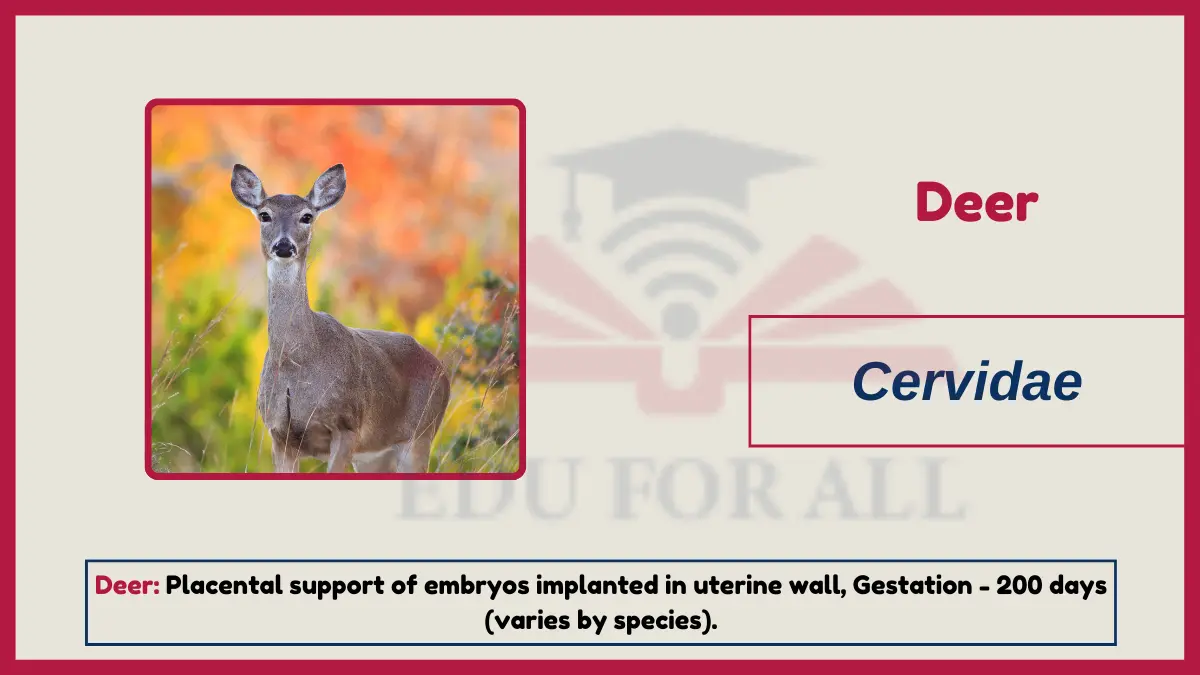
Do You Know?
White tailed deer have a gestation period averaging 200 days.
8: Elephant
Scientific name: Elephantidae
Elephants nourish their calf in utero via a complex placenta, providing sustenance without need for an egg casing, making them viviparous. The fetus develops internally within the mother’s womb this way leading up to birth.
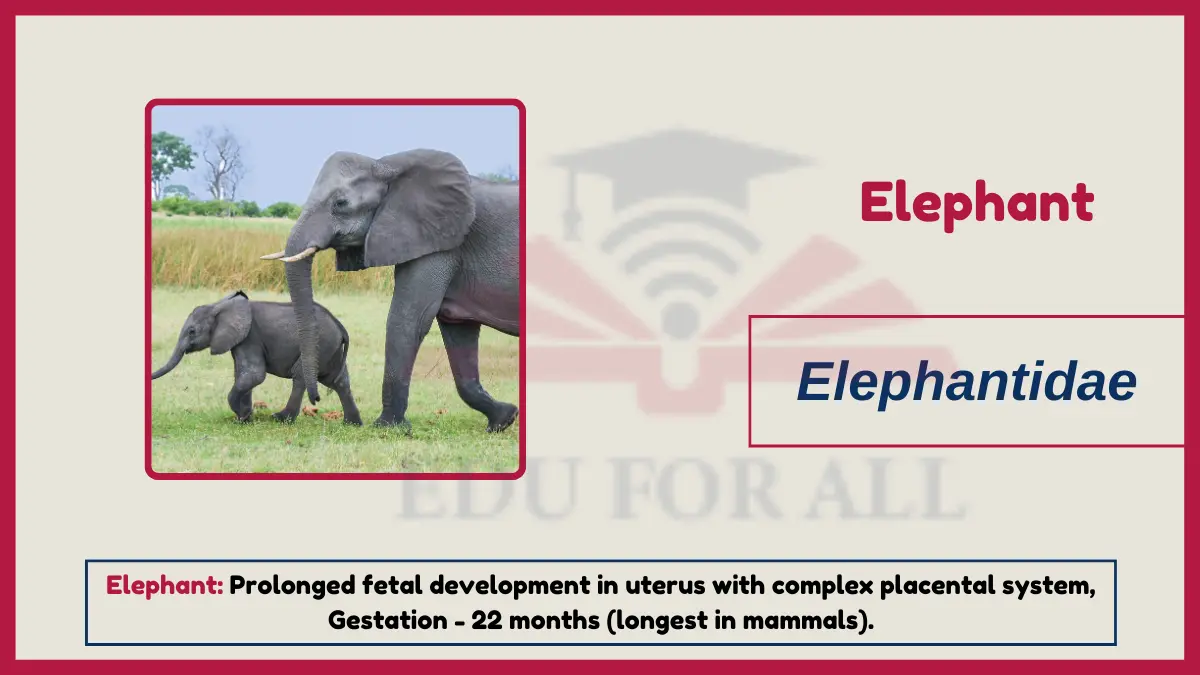
Do You Know?
Elephants have the longest gestation period of any mammal at 22 months.
9: Killer Whale
Scientific name: Orcinus orca
Killer whale embryos require no egg casing, instead receiving nutrients and support for development prior to birth directly from the mother’s body through a placenta. This internal gestation categorizes them as viviparous mammals.
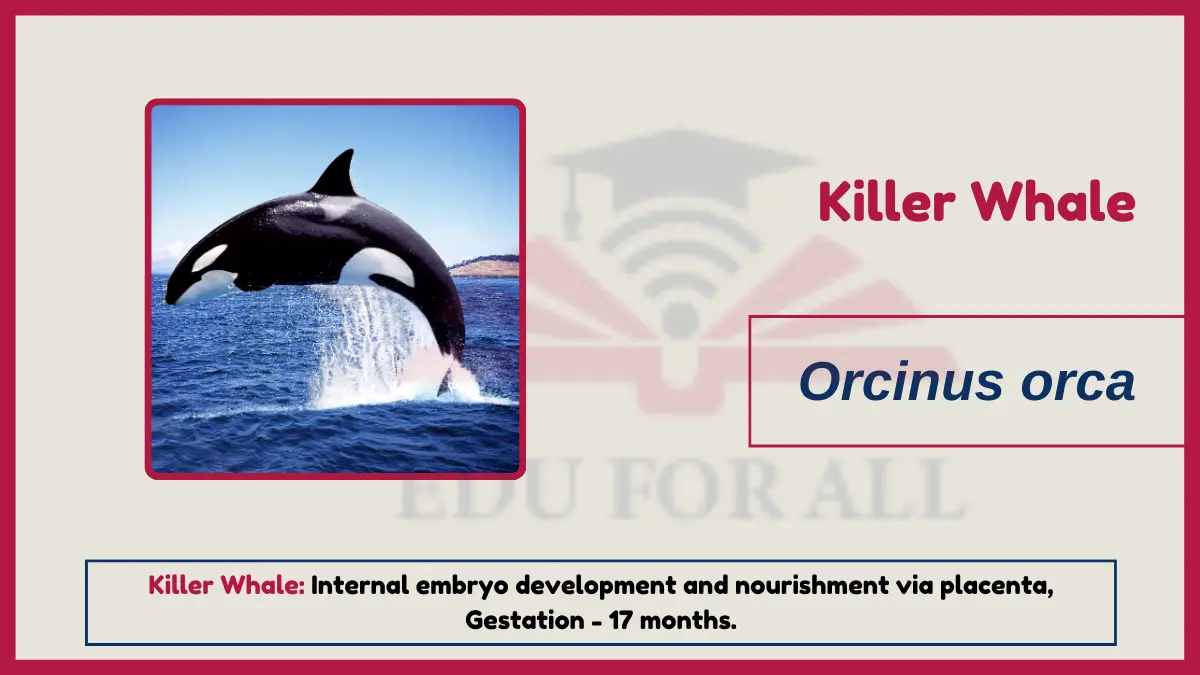
Do You Know?
Killer whale gestation averages 17 months.
10: Platypus
Scientific name: Ornithorhynchus anatinus
Though they lay eggs, platypuses exhibit viviparity once fertilized, as the egg is retained inside the mother’s body where the embryo rapidly develops before hatching. The young relies on a placenta in utero.
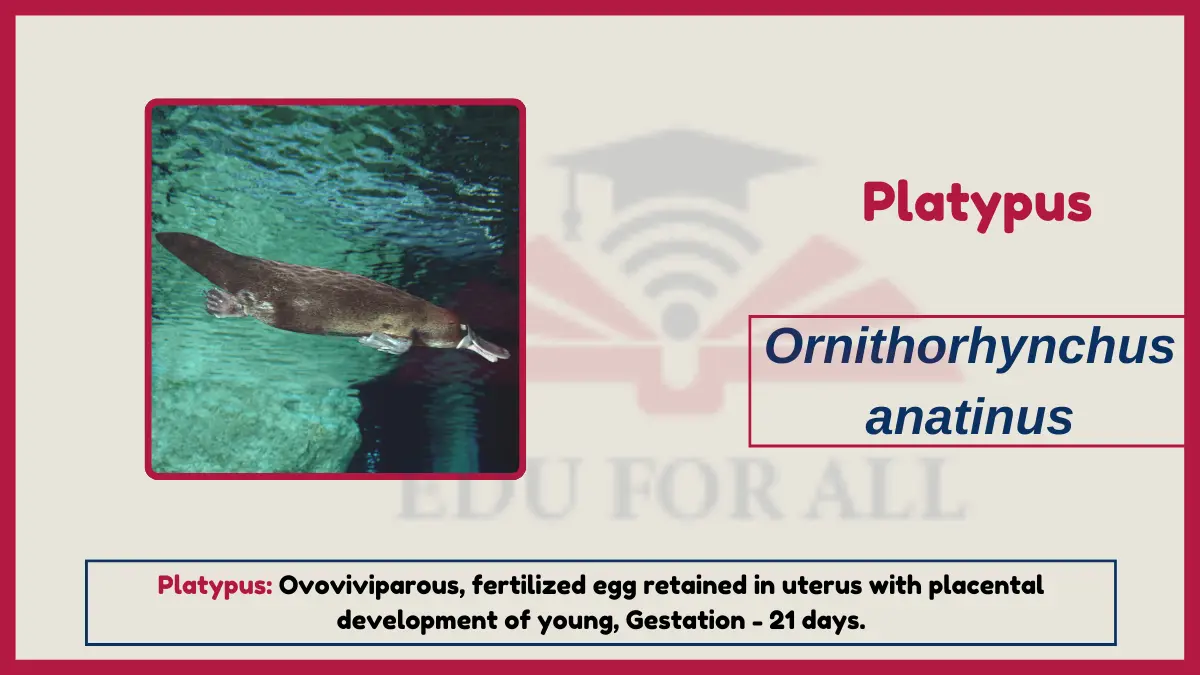
Do You Know?
Platypus pregnancies last about 21 days from mating to birth.
11: Mouse
Scientific name: Mus musculus
Mice are considered viviparous mammals because, rather than laying eggs, the offspring grow inside the mother, connected to her bodily systems via a nutrient-supplying placenta within the womb where development progresses until birth.
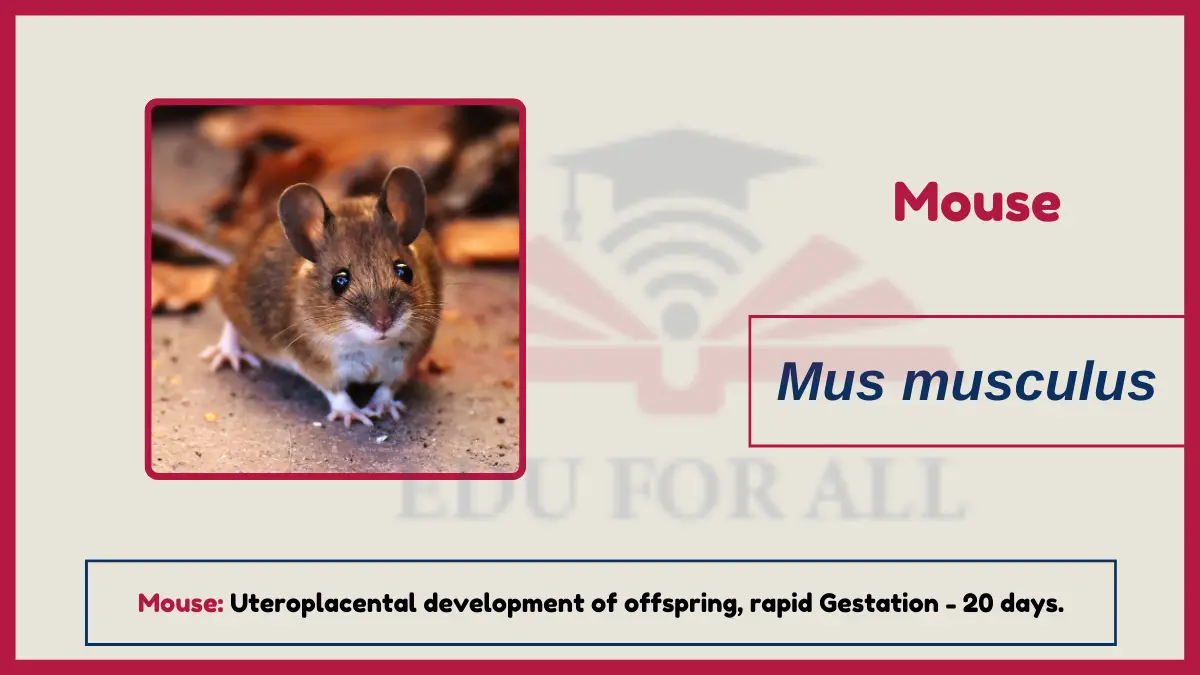
Do You Know?
The average gestation period for a mouse is 20 days.
12: Rabbit
Scientific name: Oryctolagus cuniculus
Rabbits exhibit viviparity – embryos nourished internally by maternal systems via placental attachments in utero rather than an egg casing. Offspring thus continue maturation within the doe’s reproductive system fully until birthed.

Do You Know?
The average rabbit pregnancy lasts 30 – 32 days.
13: Squirrel
Scientific name: Sciuridae
Squirrels demonstrate viviparity as the young begin developing inside the mother’s body, deriving sustenance from her bodily resources through a placenta rather than an egg shell. This internal maturation persists until the birthed conclusion.
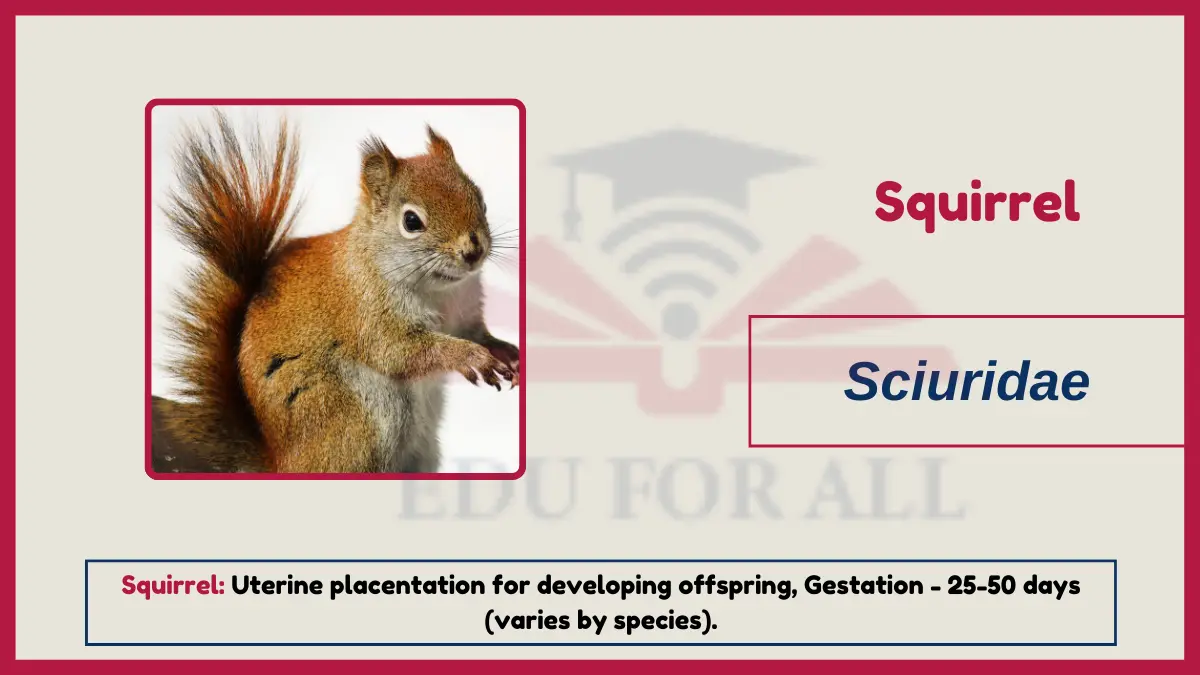
Do You Know?
Gestation periods range around 25 – 50 days depending on the squirrel species.
14: Bear
Scientific name: Ursidae
As viviparous mammals, species of bear nurture their young internally during gestation, providing uterine nourishment and support via a placenta rather than an egg casing during the growth process up until birth.
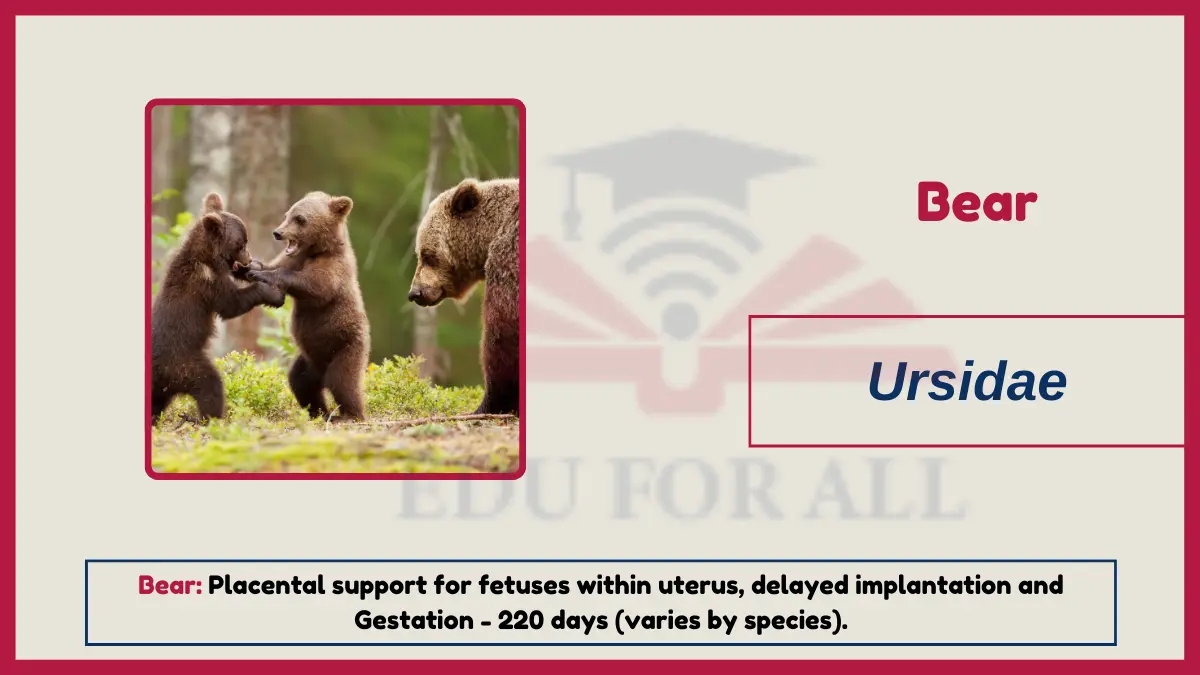
Do You Know?
American black bears have an average gestation of 220 days.
15: Otter
Scientific name: Lutrinae
Otters exhibit viviparity, with new offspring growing inside the mother sustained by resources passing through a placental attachment rather than an egg casing until they reach full development for birthing.
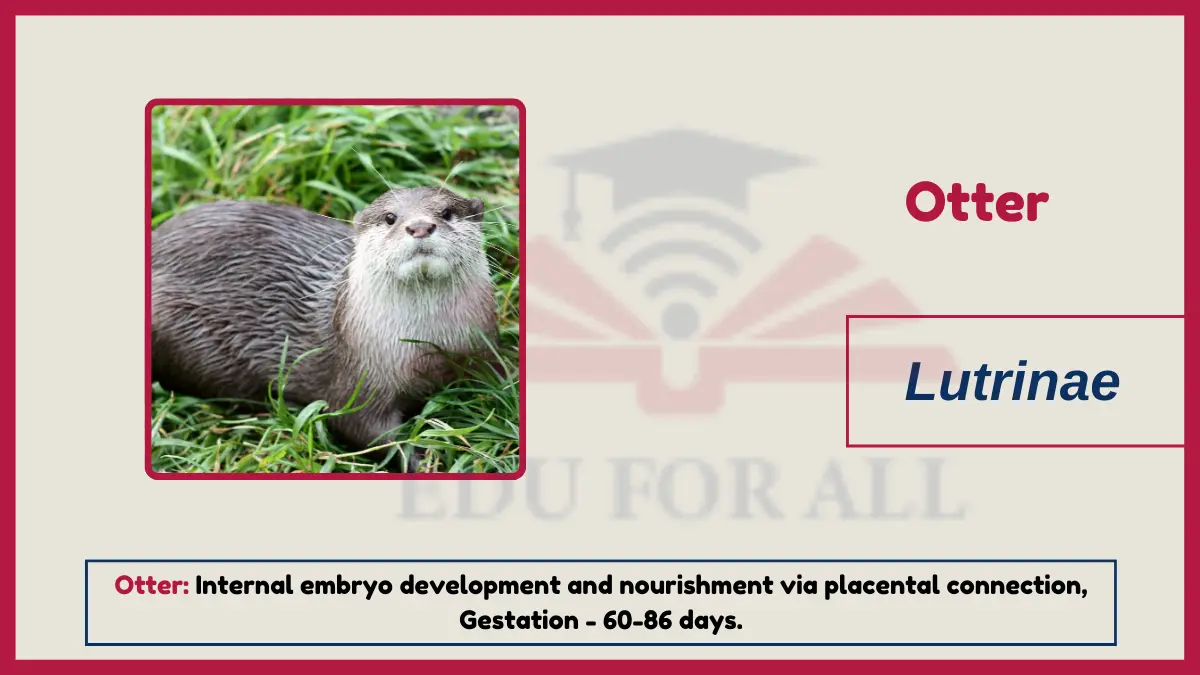
Do You Know?
River otters have a gestation period around 60 – 86 days.
16: Kangaroo
Scientific name: Macropodidae
Most marsupials demonstrate ovoviviparity as kangaroos do – short gestation internally before birth, followed by further development nursing in the mother’s pouch. Thus they display attributes of viviparity.

Do You Know?
Red kangaroo pregnancy lasts 30 – 31 days from conception to birth.
17: Dolphin
Scientific name: Delphinidae
Dolphins carry pregnancy internally, nurturing their young through a placental connection supplying nutrients and sustenance. As viviparous mammals, dolphins birth fully-matured calves.
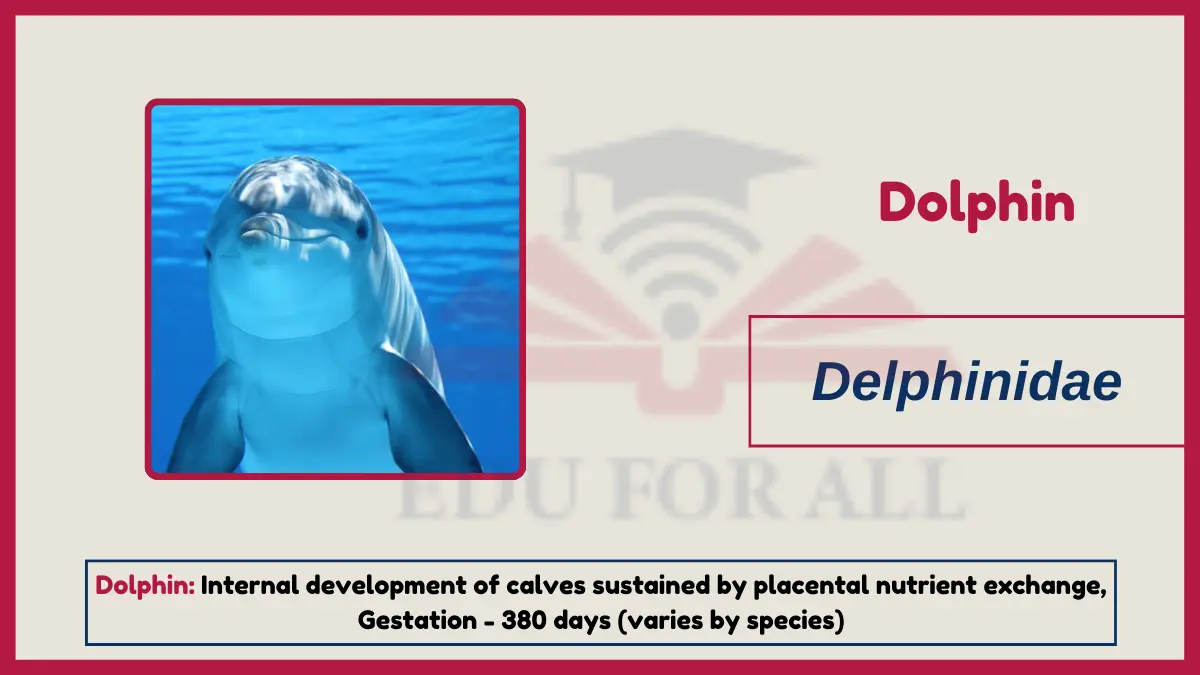
Do You Know?
Dolphin gestation averages 380 days but varies among species.
18: Ferret
Scientific name: Mustela putorius furo
Ferrets exhibit viviparity, with the kits developing inside the jill’s reproductive system, attached to a placenta that provides sustenance. They mature this way internally until the birthing process without an egg casing.
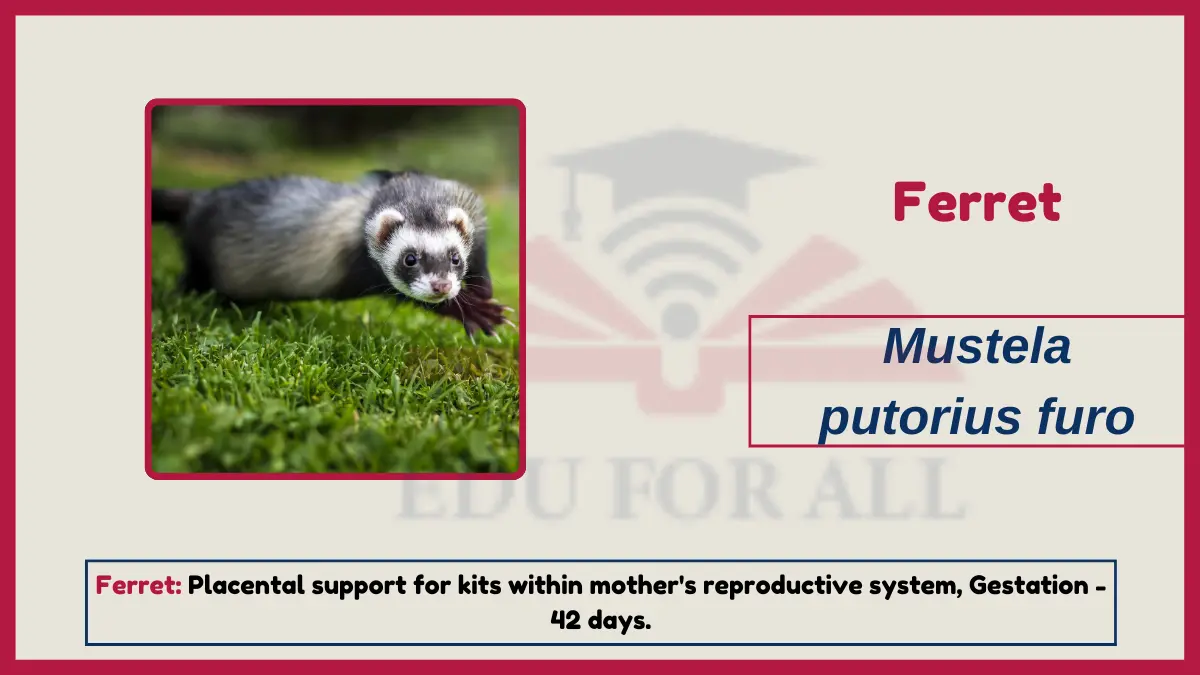
Do You Know?
Ferret gestation periods average 42 days.
19: Hamster
Scientific name: Cricetinae
Hamsters demonstrate viviparity, carrying offspring internally within the uterus where they connect to a nutrient-supplying placenta to continue growing until parturition, rather than hatching from eggs.

Do You Know?
Hamster gestation length averages 16 days.
20. Moose
Scientific name: Alces alces
As viviparous mammals, moose nurture their developing young inside the cow’s body, facilitating nutrient transfer and sustenance through a complex placenta rather than an egg casing for the duration of the pregnancy.
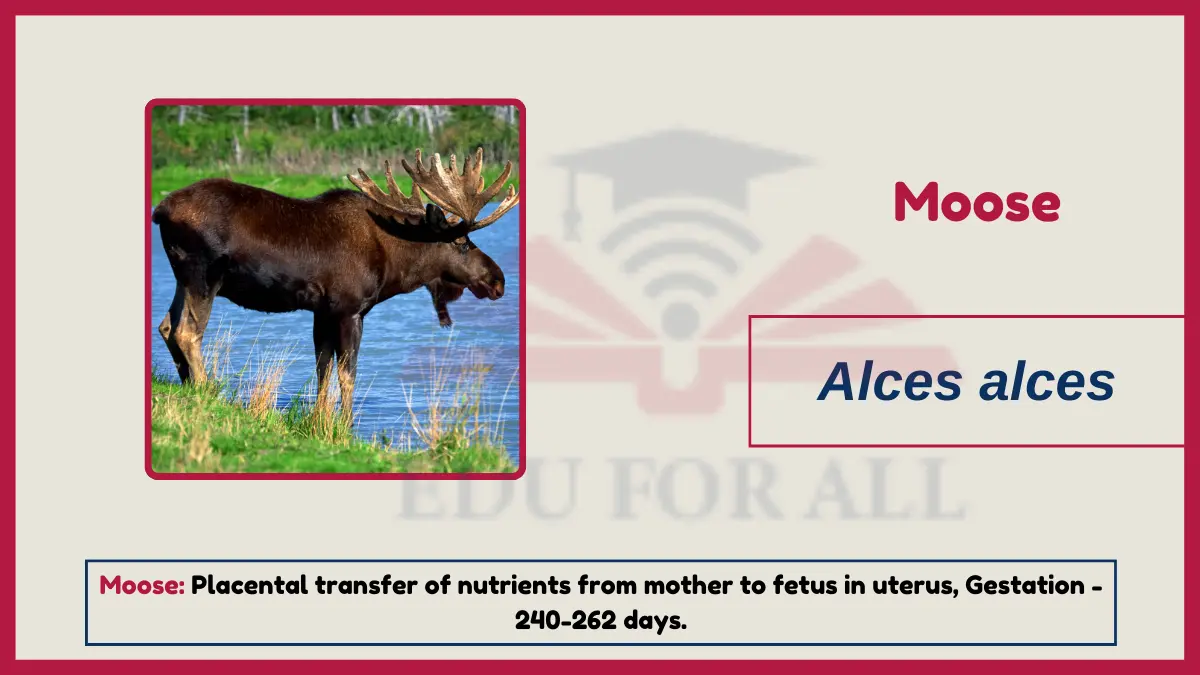
Do You Know?
Moose pregnancy lasts between 240-262 days on average.

